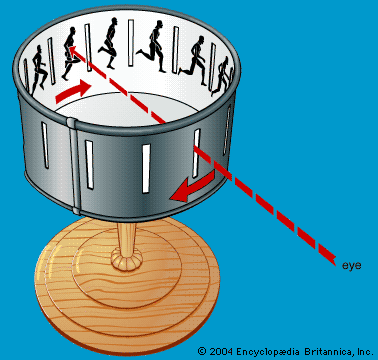History Of Animation
Persistance of vision
Persistance of vision is the idea that when our brain cannot process where data or images are missing our brain creates images or thoughts to fill in the gaps the reason for this is so our brain can make a more based decision on the situation making you think you know all the data when you do not. This is important in animation as it allows the production to use less frames and allows the viewers brain to be more involved.
ZoeTrope
A Zoetrope is one of the most commonly known forms of old animation where usually 12+ images were placed in a circular "Drum"like object and since the images are so closely related the Persistance of vision effect kicks in and our brain creates a short clip to watch based of the images This could be considered the first form of Gif.
Phenakistoscope
Similar to the Zoetrope the phenakistoscope uses the principal of Persistence of Vision to create the ideal of motion and is the predecessor of the common flip book.
Thaumatrope
A thaumatrope is another example of a device that uses persistance of vision where is singe piece of material twirls to create a single image form two, This, unlike the others was more so considered a toy compared to the others suited for all ages.



No comments:
Post a Comment